Learning The Quirks Of N702GB
by ANN Managing Editor Rob Finfrock
"Well, you land on grass REALLY well!" That enthusiastic
statement from my instructor, Jim Crone, pretty much sums up how my
training had progressed through Wednesday morning, the start of the
second day of my accelerated flight training on the Gobosh 700S...
since that's about all I did spot-on, perfect, pop the
champagne.

We had spent most of the morning's lesson down at Palatka,
shooting touch-and-goes to work on my takeoff and landing
techniques. Despite the progress I had made the evening before, I
felt myself slipping again -- I still veered left on takeoff, and
was coming in flat on landing.
On the way to the airfield, we also did some more slow flight,
progressing into a few power-off stalls. I had performed the
maneuvers competently, becoming much more comfortable with
stall recovery with practice. The plane had a tendency to dip its
right wing a bit at incipience (it did with Jim, too) but a short
kick of left rudder always brought the nose back, and the plane
started flying again the very moment the nose was lowered to the
horizon.
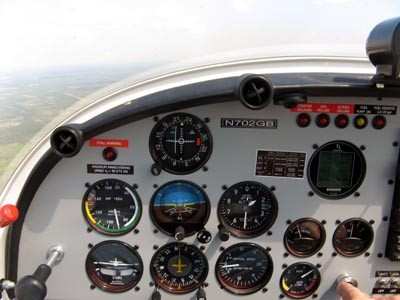
Despite that progress, though... takeoffs and landings were
kicking by you-know-what. I'm beating myself up a little here, I
know. Looking back on that lesson now, I know didn't do all that
poorly... but by the time we'd returned back to Haller, I knew I
had some niggling issues that persisted, that were throwing me a
little bit for a loop.
And, like a good instructor should, Jim had some more ideas on
how to cure myself of my own mental block. "It sounds kinda hokey,
but you really do have to develop a feel for the plane," he
told me after we landed. "You have to visualize how it reacts to
your inputs. You have to help it maneuver in the way you want it
to. It wants to help you."
Actually, that didn't sound hokey at all; if anything, I
appreciate a Zen approach to flying. So Wednesday afternoon,
before we took off again... I sat in the Gobosh's cockpit for a few
minutes, visualizing the proper nose attitude on takeoff and
landing... and generally communing with the plane.
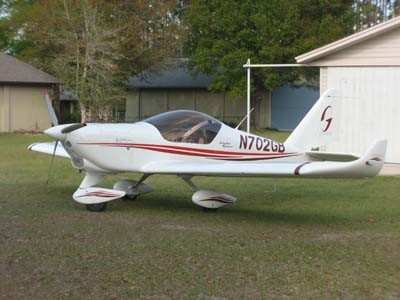
Even with some setbacks, I was having great fun flying the
Gobosh. In just 36 hours or so, I'd come to consider the plane
"mine!" -- at least for the next 10 days or so. Jim and I
agreed the Gobosh both looks and feels very substantial, compared
with some other LSAs we had each spent time in.
As befitting the company's demonstrator model, N702GB is a
top-of-the-line Elite Plus Edition -- complete with a GPS 496 and a
single VOR receiver in the panel, and leather seats. Even the
lowliest 700S base model sports a true six-pack of analog gauges,
just like a "real" plane... something you have to pay extra for in
most LSA, if available at all (of course, an increasing number of
aircraft sport glass panels, as does Gobosh's recently unveiled
800XP.)
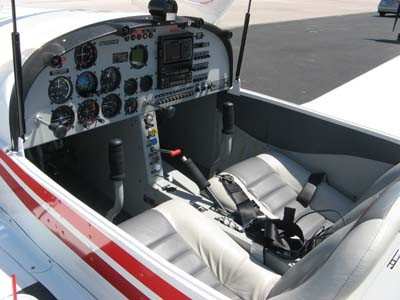
Alas, some of that heftier impression is also due to, literally,
heft. At 820 lbs empty weight listed -- including avionics -- the
700S tips towards the heavier end of the light sport spectrum...
offering about 500 lbs of useful load for occupants, fuel and
baggage. (Jim and I had to be mindful of that limit when loading
the 700S, thanks to the fact my bulk alone takes up about
half that allotment.) By comparison, the SportStar I flew last year
weighed in at under 700 lbs empty, and offered close to 600 lbs
load. Even at the Evektor's lower gross weight, that's still a
nearly 100-pound advantage.
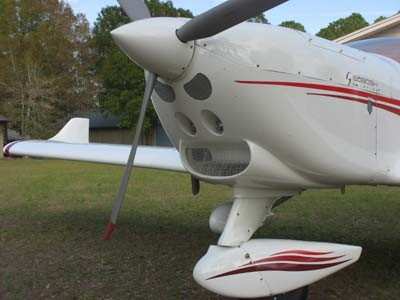
Regardless of that weight disparity, though, one can't argue
Poland's Aero -- manufacturer of the 700S, also known as the
AT-4 -- used the extra weight to its best advantage. In
addition to a full panel, there are other signs of "big plane"
thinking.
Jim, who took the plane through its 100-hour inspection just
before we started training, noted the 700S main
wingspar appears quite substantial -- "like a Piper." The 700S
also offers a wide gear stance, that to my untrained eye (and
unpolished landing technique) seemed a bit sturdier than some
other LSAs... an important consideration in the training role, to
be sure.
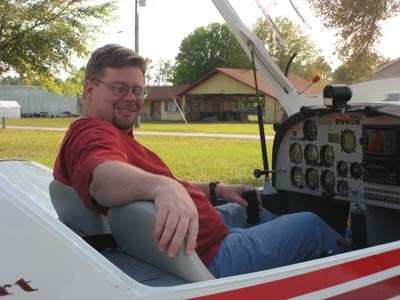
After about 20 minutes of me sitting in the plane -- moving the
controls, fiddling with the gauges, noting how the nose looked
relative to the ground, and imploring 2GB to help make me look like
a competent pilot -- Jim came out carrying his flight bag. "Ready
to fly?"
A thorough preflight, a routine engine startup, and we were
ready to go. I taxied out to the end of the south runway, announced
our intentions on Haller's CTAF, and advanced the throttle.
Okay, no more veering Finfrock, make this one count.
Alas... what resulted was my single-worst takeoff
attempt to occur during all my training. Despite standing on
the right rudder, once I shoved in full throttle I simply could not
get the plane's nose centered without resorting to using the
brakes. My ground roll was atrocious; Jim took over as we veered
precipitously towards a drainage ditch near midfield.
Dammit! "Well, let's try that again," Jim said
calmly.
My second attempt was more serviceable... enough so, at least,
to get us off the runway, and into the air. By this time, I was
really missing direct nosewheel steering; part of my
problem, I felt, was the free-castering nosewheel, which of course
provides no directional control when starting the takeoff roll.
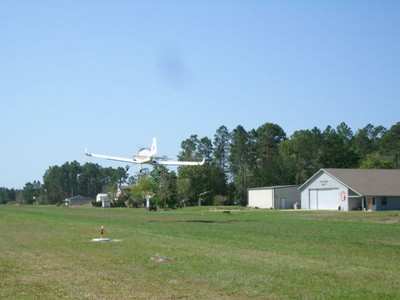
As I pointed the plane's nose directly -- and
somewhat indignantly -- towards Palatka, Jim promised he still
had some more ideas. "We're gonna take care of this before the
night's over," he assured me.
After a decent landing at Palatka -- well, at least I did
something right -- Jim took over as we taxied back to the end
of the runway. "We need to find your sweet spot in balancing
throttle with rudder," he said.
"Bring the plane around just a bit right of centerline, start
giving it throttle, and keep the plane lined up just to the right
during takeoff," he told me. "Keep the centerline in sight, and
don't let the plane cross the line... don't let it veer right,
either, but you get the idea."
 He then turned the
plane back over to me. As we taxied out, I applied a bit of
throttle as I crossed the centerline... which brought the plane's
nose directly parallel to it, pointing us straight down the runway.
I then slowly advanced the throttle to full... all the while
keeping the centerline in my peripheral vision. Sure enough,
the line remained just to the left of the aircraft as I juggled
rudder application to keep us pointing straight.
He then turned the
plane back over to me. As we taxied out, I applied a bit of
throttle as I crossed the centerline... which brought the plane's
nose directly parallel to it, pointing us straight down the runway.
I then slowly advanced the throttle to full... all the while
keeping the centerline in my peripheral vision. Sure enough,
the line remained just to the left of the aircraft as I juggled
rudder application to keep us pointing straight.
Well, whaddya know...
As they say, confidence breeds confidence. My sense of
accomplishment carried through past the rollout; I nailed 60 knots
on the climb, and held it through our turns to crosswind and
downwind, until we hit pattern altitude. Jim waited until we
leveled off at 1,000 feet to acknowledge the victory. "See? Do that
again!"
And I did! Twice more I took us into the air, rod-straight down
the runway. Following my third landing -- which, like nearly
all my other landings, was still flat -- we taxied over to the
self-service pumps for fuel.
"OK, your takeoffs seem to be coming along," Jim said as we
fueled the plane. "Now, let's get your landings down, and we can
head home."
With about an hour of daylight left, Jim taxied us back to the
runway. "Remember how you used the rudder to keep the nose straight
during the high-speed taxi last night? Now, let's add a new
variable to that."
Following yet another spot-on takeoff, Jim took over the
controls as we turned base-to-final. "I'm going to lightly touch
down, then add just enough power to lift off, then settle back
down. Follow me on the controls, and note how the nose stays
high."
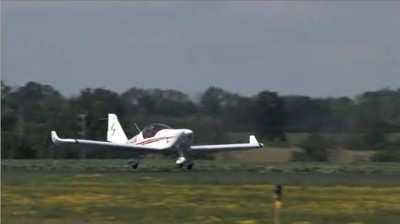
As a passenger, it was somewhat unsettling to feel the mains
touch down... then lift off as Jim applied power... then settle
back down again. Palatka's 6,000-foot Runway 9 allowed Jim to
perform five "bounce-and-goes" (my term) before we took off again.
He then had me duplicate the maneuver... and as it turned out, it
was actually a lot of fun, and a great lesson on precise control
inputs.
The second lesson was even more fun: holding the plane in ground
effect on landing, keeping the mains about a foot or so off the
runway, using throttle inputs to hold the plane off the ground.
It's all about balancing the plane in ground effect, and hanging on
the prop.
"This is so cool!" I exclaimed, before grumbling good-naturedly
as I felt the mains kiss the runway ever-so-gently.
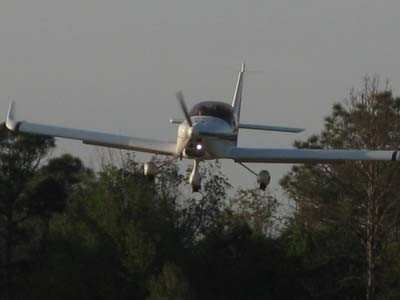
After a few more touch-and-goes, we turned back towards Haller.
By now the clock was approaching 8 pm, near the end of civil
twilight. My landing at back at Haller was another greaser; if only
all runways were grass...
Still, I now had a sense of accomplishment that had been elusive
since we'd started. And I knew who should get credit for it.
"Thanks, bud," I told Jim after we shut down.
Coming Thursday: The FAA Written Exam... And A Long
Cross-Country!
 ANN's Daily Aero-Term (04.14.24): Maximum Authorized Altitude
ANN's Daily Aero-Term (04.14.24): Maximum Authorized Altitude ANN's Daily Aero-Linx (04.14.24)
ANN's Daily Aero-Linx (04.14.24) Classic Aero-TV: 'We're Surviving'-- Kyle Franklin Describes Airshow Life 2013
Classic Aero-TV: 'We're Surviving'-- Kyle Franklin Describes Airshow Life 2013 Aero-News: Quote of the Day (04.14.24)
Aero-News: Quote of the Day (04.14.24) Airborne 04.09.24: SnF24!, Piper-DeltaHawk!, Fisher Update, Junkers
Airborne 04.09.24: SnF24!, Piper-DeltaHawk!, Fisher Update, Junkers












